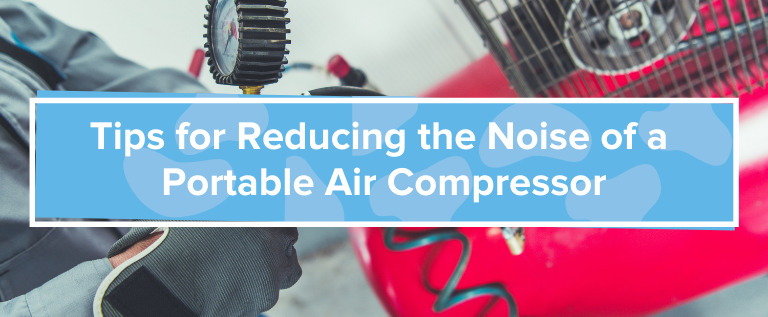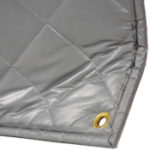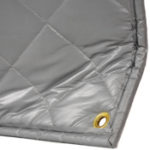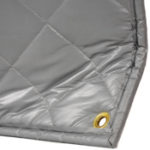
While portable air compressors are handy tools for businesses and contractors working in manufacturing, construction or the automotive industry, they create a lot of noise. Prolonged exposure to high sound levels can cause long-term hearing damage. That said, there are a few techniques that can limit the amount of sound your portable air compressor produces. Here are our tips for how to reduce noise from a portable air compressor.
1. Use a Muffler
A large proportion of the noise produced by your air compressor comes from the machine’s air intake. The intake pipe funnels incoming air past a flapper valve or reed, causing it to rattle off high-frequency noises. Mufflers function as both an air filtration and silencing device. They cycle air through tubes and sound-deadening materials while still allowing plenty of airflow into the system. Measure your air compressor’s intake pipe to find a muffler that’s right for your system.
2. Add Rubber Grommets
Rubber grommets can reduce vibrations, limiting the amount of contact noise your air compressor makes while running. If your air compressor rests directly on the ground or another hard surface while in use, it will vibrate and produce a lot of extra noise. Rubber grommets will function as a barrier between your air compressor and the surface it rests on to absorb vibrations and significantly reduce noise.
3. Dampen the Sound With Blankets
If you’re looking for a cost-effective DIY noise suppression solution, wrapping your air compressor with blankets can help to reduce high- and mid-range frequencies. Blankets function twofold to minimize vibrations and prevent noise from escaping. If you have a square, stationary unit, you can drape blankets on top of the machine if you allow for proper ventilation. Blankets can also function as sound-absorbing insulation inside a two-sided enclosure or isolating box.
4. Place the Intake Outside
While it’s not a direct noise reducing solution, creating some distance between yourself and your portable air compressor can mitigate the effects of the noise it makes. Placing your air compressor outside of your workspace can significantly reduce the amount of noise you’ll hear. If you can, try to position it between two buildings for enhanced sound absorption before the frequencies reach your ears. If placing your compressor outside isn’t possible, just try to work as far away from it as you can.
5. Add Soundproofing Materials
DIY hacks can take an edge off of the noise your portable air compressor creates. That said, the most effective way to mitigate the harmful effects of a loud air compressor is to incorporate professional-grade soundproofing equipment into your workflow.
Noise reflects off of walls and hard surfaces. Try lining your workspace with soundproofing barriers. You can reduce noise by creating an absorptive layer that prevents sound from bouncing off of the walls and ceiling. From acoustic foam panels to vibration isolation feet, you’ll find a wide selection of effective portable compressor soundproofing products at Soundproof Cow.
Learn More From Soundproof Cow
When it comes to noise reduction solutions, Soundproof Cow is your go-to. For more information on how to quiet a portable air compressor — and to find deals on commercial soundproofing solutions — contact us today!










